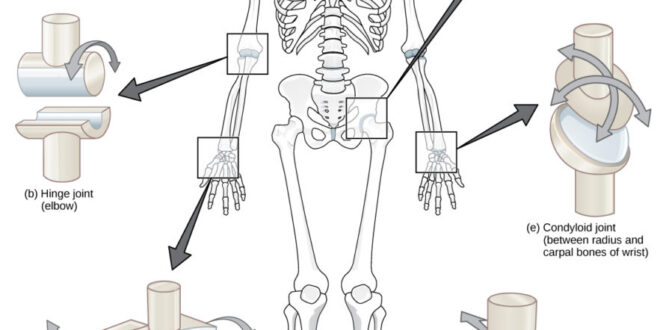In the intricate tapestry of human anatomy, joints play a pivotal role in facilitating movement and providing structural support. Among the diverse array of joint types, the saddle joint stands out for its unique structure and versatility. Positioned at key points in the body, saddle joints enable a wide range of movements, contributing significantly to our mobility and dexterity. This article delves into the definition, structure, function, and significance of saddle joints in the human body.
Understanding Saddle Joints:
Saddle joints, also known as sellar joints, derive their name from their resemblance to a saddle—a structure designed to accommodate and facilitate movement in multiple directions. These joints are classified as a type of synovial joint, characterized by their articulating surfaces covered with hyaline cartilage and enclosed within a joint capsule filled with synovial fluid.
Structural Components:
The defining feature of saddle joints lies in their unique anatomy. Unlike other joints that permit movement along a single axis, saddle joints possess a complex biaxial articulation. This arrangement involves two reciprocal concave and convex surfaces that fit together like two complementary puzzle pieces. The opposing surfaces of the bones forming the joint have complementary convex and concave shapes, resembling the structure of a rider’s saddle atop a horse’s back.
Functionality and Range of Motion:
The intricate configuration of saddle joints grants them an exceptional range of motion, allowing for flexion, extension, abduction, adduction, and circumduction. This versatility makes saddle joints crucial in areas where precise and extensive movements are required. One of the most notable examples of a saddle joint in the human body is the carpometacarpal joint of the thumb. Here, the articulation between the trapezium bone of the wrist and the first metacarpal bone of the thumb enables the thumb’s oppositional movement—essential for activities such as grasping and manipulating objects with precision.
Clinical Significance:
Given their crucial role in facilitating fine motor skills and precise movements, any impairment or injury to saddle joints can significantly impact an individual’s mobility and dexterity. Conditions such as osteoarthritis, rheumatoid arthritis, or trauma-related injuries can affect the integrity and functionality of saddle joints, leading to pain, stiffness, and diminished range of motion. Proper diagnosis, treatment, and rehabilitation are essential for managing such conditions effectively and restoring optimal joint function.
Biomechanics and Adaptations:
The biomechanics of saddle joints reflect a delicate balance between stability and mobility. The unique shape and orientation of the articular surfaces ensure stability during weight-bearing activities while permitting a wide range of movements. Additionally, ligaments surrounding the joint provide reinforcement and prevent excessive displacement of the bones, maintaining joint integrity. Over time, through adaptive responses to various stimuli such as physical activity or repetitive tasks, saddle joints can undergo structural changes to optimize their functionality and resilience.
Evolutionary Perspective:
From an evolutionary standpoint, the development of saddle joints exemplifies nature’s ingenuity in adapting organisms to their environments. The emergence of biaxial articulations like saddle joints in vertebrates coincided with the need for increased mobility and manipulation—a hallmark of species survival and adaptation. The evolutionary success of organisms with such specialized joints underscores the pivotal role they play in facilitating complex behaviors and enhancing overall fitness.
Conclusion:
Saddle joints represent a marvel of anatomical design, showcasing the intricate interplay between structure and function in the human body. Their unique configuration enables a diverse range of movements essential for activities of daily living, manual dexterity, and overall well-being. Understanding the anatomy, biomechanics, and clinical significance of saddle joints not only deepens our appreciation for the complexity of human physiology but also underscores the importance of preserving joint health for optimal mobility and quality of life.
 HammBurg Be informed with latest news, reviews, entertainment, lifestyle tips, and much more.
HammBurg Be informed with latest news, reviews, entertainment, lifestyle tips, and much more.




